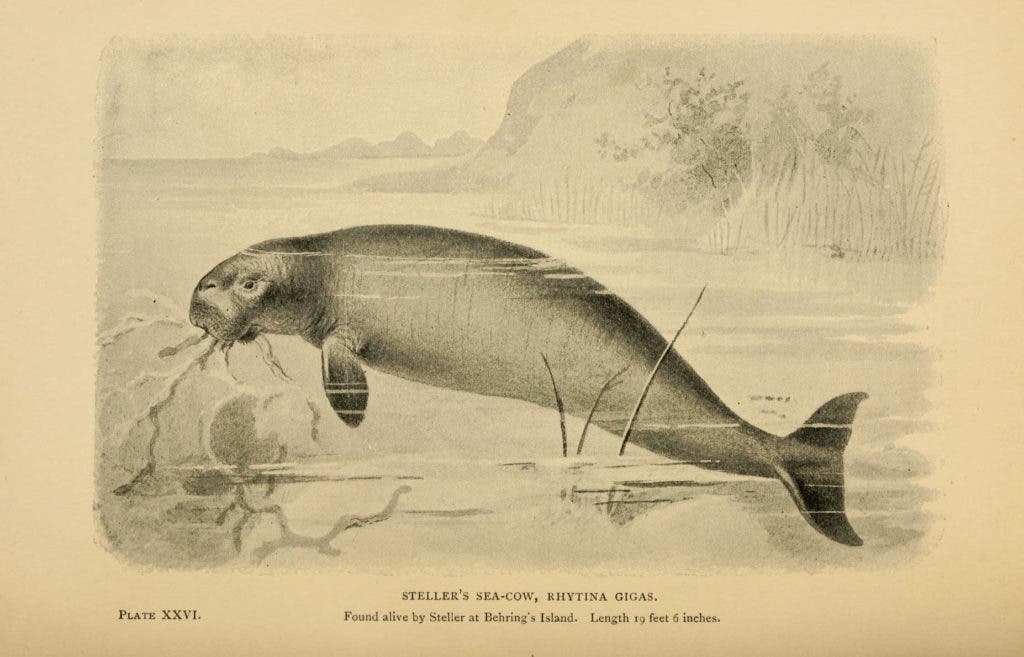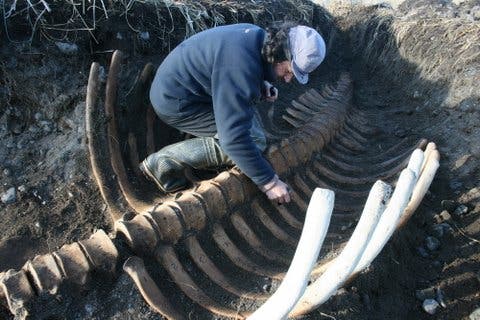Up until the 18th century, a gentle sea giant flourished in the Arctic waters of Russia’s Commander Islands — a group of treeless, sparsely populated islands in the Bering Sea. That’s until it was hunted to extinct and no more than 27 years since it was first discovered. Steller’s sea cow ( Hydrodamalis gigas) used to be the biggest mammal of the Holocene, apart from cetaceans. Now, scientists have found the headless skeleton of an almost perfectly preserved sea cow beneath a beach in Siberia.

The team led by Marina Shitova first began to excavate the site at the Komandorsky Nature Reserve after they found the animal’s ribcage protruding from the sand. Although the skull and several vertebrae were missing, the researchers were able to piece together the rest of the remains.
When it was alive, the scientists reckon that the sea cow must have measured around 5 meters (17 feet) end to end, weighing 5 to 7 tonnes. The animal was named after George Stellar, an 18th-century naturalist, who described sea cow thusly:
“The animal never comes out on shore, but always lives in the water. Its skin is black and thick like the bark of an old oak, its head in proportion to the body is small, it has no teeth, but only two flat white bones one above, the other below”.
It’s rather rare to find Steller’s sea cow skeletons. Most specimens on display in museums around the world are composite skeletons — strung-together remains belonging to various individuals. The Finnish Museum of Natural History in Helsinki is the only place you’ll find an intact sea cow skeleton.

According to Shitova, the remains will be displayed on the Commander islands once they’ve been completely studied. Her team doesn’t have an age estimate of the specimen yet but judging from how well preserved the remains are, she doesn’t believe there’s anything ancient about it.
Harpooned to extinction
Steller’s sea cow was first discovered in 1741 by explorers that ventured into parts of the Arctic Circle. The first records mentioned that the sea cow could be found in abundance in the North Pacific. It only took 27 years of vicious overhunting for the marine mammal to go extinct. It must have been an easy job, too. The sea cow is said to have been very gentle. Because it had few if any predators, the toothless beast didn’t take too much notice of humans while it grazed on kelp, a seaweed. It was slow-moving and moved in herds. One sea cow allegedly could have fed 33 men for a month. Its flesh tasted like almond oil, which also spread the word about its meat. It didn’t take too long before the word got out that there’s a tasty, easy prey lurking in the icy waters. Sailors flocked and the sea cow was done for. The last sea cow was reportedly killed in 1768.
One study found human hunters may have even killed seven times as many sea cows as they could eat due to primitive hunting tools and techniques. Steller’s sea cow, much like its smaller cousins the manatees, would have given birth to a single calf after a gestation period probably lasting over a year. The calf would have then stayed with the mother until it grew strong enough to become independent. Humans, however, simply hunted far faster than the sea cows could reproduce.
This unfortunate history mirrors the demise of the dodo (Raphus cucullatus), a clumsy bird that was flightless and fearless (from evolving on an island with no natural predators), making it an easy target for hunters. In less than 100 years since it was first discovered, the dodo went extinct.



